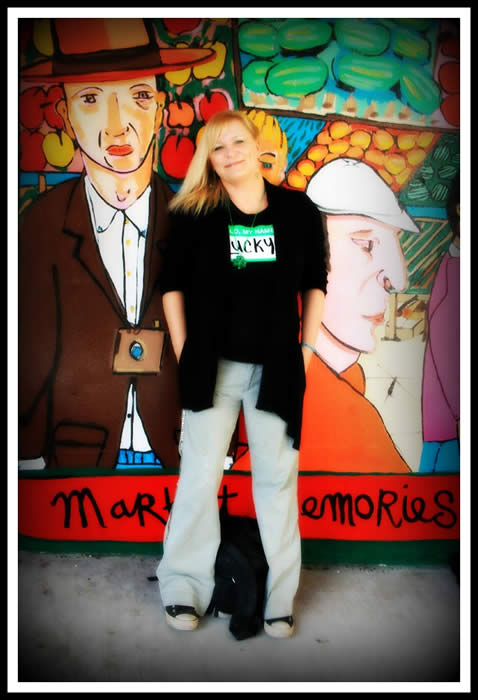
After camping in Coupeville for a decade-plus, the Whidbey News-Times moved back to its old home up in Oak Harbor in mid-2020, but no longer has the use of the entire building. (Photo property Garage of Blessings)
The living history of Whidbey Island no longer … lives on Whidbey.
It’s not a commonly-known fact, but the archives for the Whidbey News-Times, South Whidbey Record, and Coupeville/Whidbey Examiner all reside in Port Angeles these days, unable to be accessed by readers or journalists.
For the most part.
It’s a tale with no villains, however.
Just a story of how newspapers, especially those operating with long histories and limited storage space, have had to adapt.
So, yes, as I try and pull together the last 100+ years of Coupeville athletics into a semi-coherent story, the lack of local newspaper archives (public or private), does make that self-appointed job a bit tougher.
But there are reasons, valid ones, for why we are where we are today.
For those that don’t know, these archives I speak of are primarily comprised of bound volumes of the newspapers, with the earliest dating back 125+ years.
Depending on the thickness of the papers at the time, the volumes vary between six months and a year.
Which meant during my own days at the Whidbey News-Times (1990-1994), or my current vagabond years, I could usually pluck out say, “January-June, 1963,” blow off the dust, and leaf through history.
For the general public, that ended around 2013, when the inherent brittleness of old newspapers became a concern and the archives were restricted to employee access only.
“I was finding pieces of the oldest editions on the floor and volumes left in unacceptable condition after they were viewed by the public, despite posted notices of how to treat the books,” said WNT Publisher Keven Graves.
“We have had one user of the archive who wore gloves and, as she handled the volumes, would make museum-quality repairs to them as she went. That was greatly appreciated.”
Even after the archives were closed, I was granted the occasional dispensation, allowed to investigate stuff if I was super-careful and refrained from eating soup while leafing.
When the pandemic hit, that went away however, with access to the WNT building restricted to current employees.
As long as they weren’t eating soup while leafing…
While many newspapers transferred their product to microfiche back in the day, that was only done sporadically on Whidbey.
As the years went by, doing a whole-sale update became much too expensive.
“Because of the extent of the archives, the cost of putting everything on microfiche was prohibitive,” Graves said. “There were years when we did have the current volumes put on microfiche, but I haven’t located those, and we no longer have a microfiche reader.
“I’m not aware of when the microfiche copies were discontinued, but I suspect it was during the last office relocation to Coupeville (10+ years ago).”
Sno-Isle libraries currently have some WNT editions on microfiche, but it’s an extremely-limited amount.
During the height of the pandemic, the News-Times relocated its offices back to Oak Harbor, returning to the building at 800 SE Barrington Drive where I worked in the ’90s.
Back then, the newspaper occupied the entire two-story building, with printing presses active on-site.
Today, the bottom floor is occupied by the Garage of Blessings thrift store, limiting the newspaper to the smaller top floor.
Finding room for the news staff, plus advertising salespeople, was tricky enough, without trying to schlep heavy bound volumes along for the trip.
“We had absolutely no room for the archives anymore,” Graves said. “We downsized substantially last year in the midst of the pandemic.
“While we wanted all or some of the archives on site for our own research purposes, it just wasn’t feasible,” he added. “Also, the weight of the archives in one place on a second floor unit was a bit of a concern.”
Compounding the problem is that the archives aren’t just the bound volumes.
Writers and photographers, including Whidbey legends such as Wallie Funk, Dorothy Neil, and Jim Waller, have been collecting all sorts of historical stuff for decades.
“Relocating the archives offsite was never the desired result of downsizing our office, but given the circumstances, it was really our only one,” Graves said. “In addition to the newspaper back volumes themselves, there are photo archives comprised of dated and notated negatives/proof sheets.
“There were also some administrative archives that required storage,” he added.
“Lastly, that amount of storage in a space this much smaller could ultimately present a fire and safety hazard because of inadequate space for storage. It would have looked like a hoarder’s dream.”
When it became clear the archives would have to be sent elsewhere, they were “laid flat, wrapped, and protected,” and are now “stored in appropriate conditions until their return someday to the Island.”
In my mind, I’d like to imagine the Port Angeles facility looking like the sprawling warehouse at the end of Raiders of the Lost Ark.
The newspaper archives are wheeled in, then locked away with the Ark of the Covenant, assorted UFO doo-dads, and a photo or two of Graves himself back from when he was rockin’ the ‘stache in the ’80s.
Mr. Responsible shoots that idea down, however.
“Unlikely,” Graves said with a chuckle. “I haven’t seen it, but I was assured they will be well-protected and preserved until we can bring them on site again someday.”
With the archives off-Island, one seemingly-valid question is how that affects the current News-Times and Record staff, which is largely comprised of young reporters who did not grow up here, and don’t necessarily have an extensive knowledge of Whidbey’s past.
This can be worked around, however, Graves said.
“Most background that we need is within the past 10 years, which is available on our websites,” he said.
“Beyond that, if needed, a reporter could make the arrangements to make the trip to the peninsula to do research. That hasn’t been necessary during this past year.”
Graves, who worked at the News-Times as a young reporter and assistant editor, before going on to run newspapers in other areas before his return to Whidbey, can also be tapped as an asset.
As can WNT editor Jesse Stensland, who has put in two-decades-plus at the paper.
“Between Jessie and I, we have fairly comprehensive knowledge/background dating back to 1986,” Graves said. “This serves as a reasonable starting point for reporters if they need to gather background.”













































Leave a comment